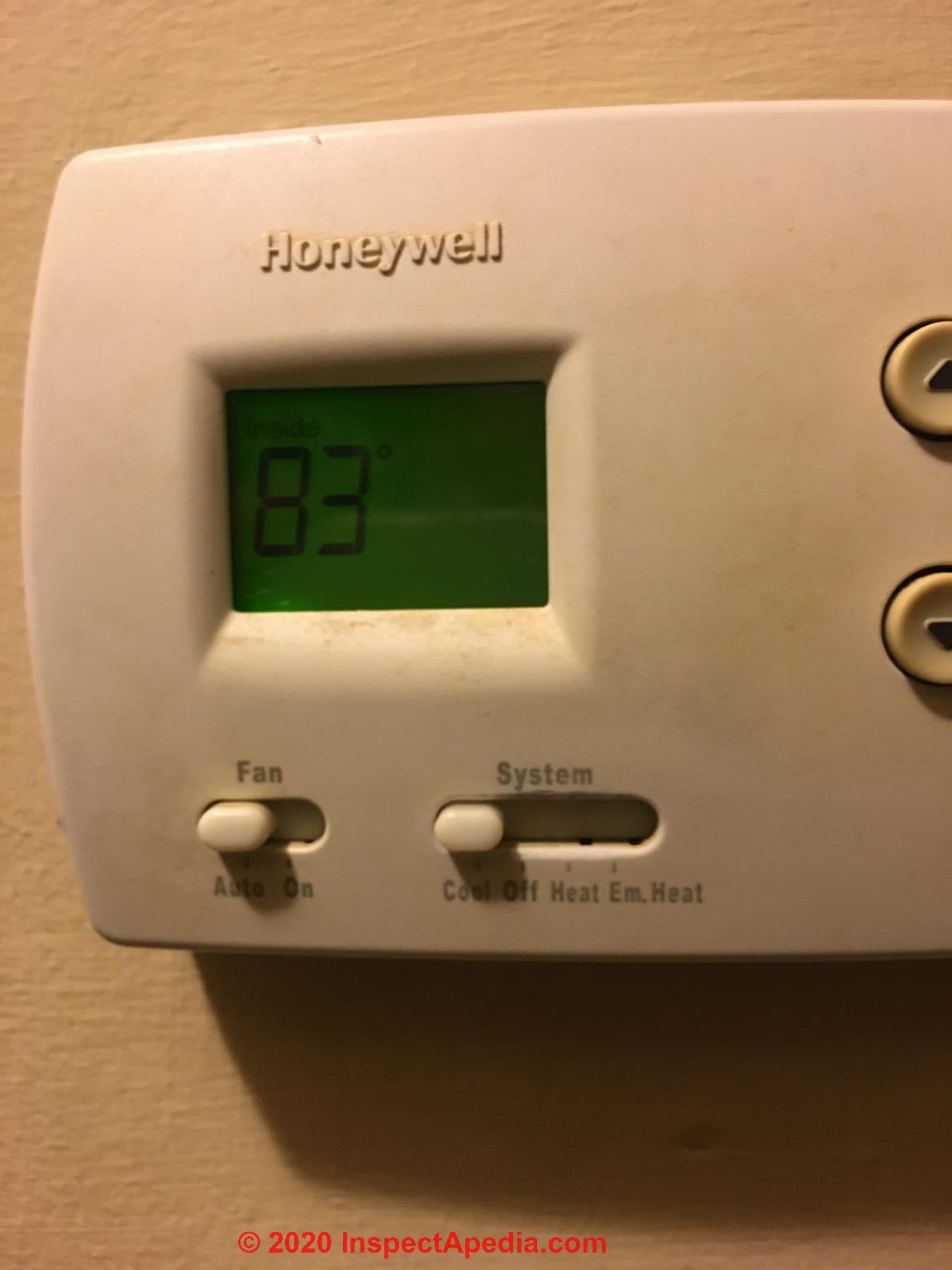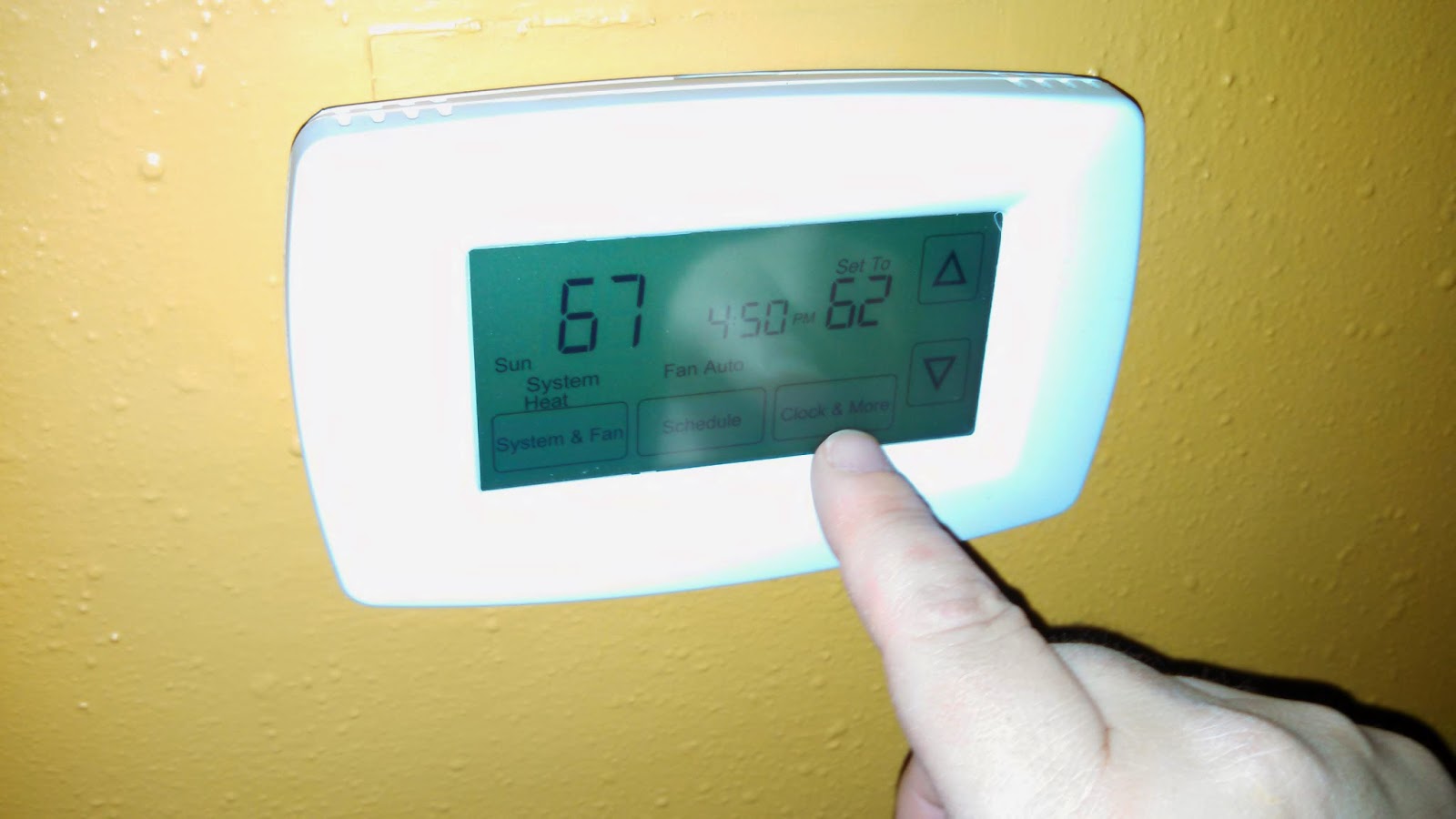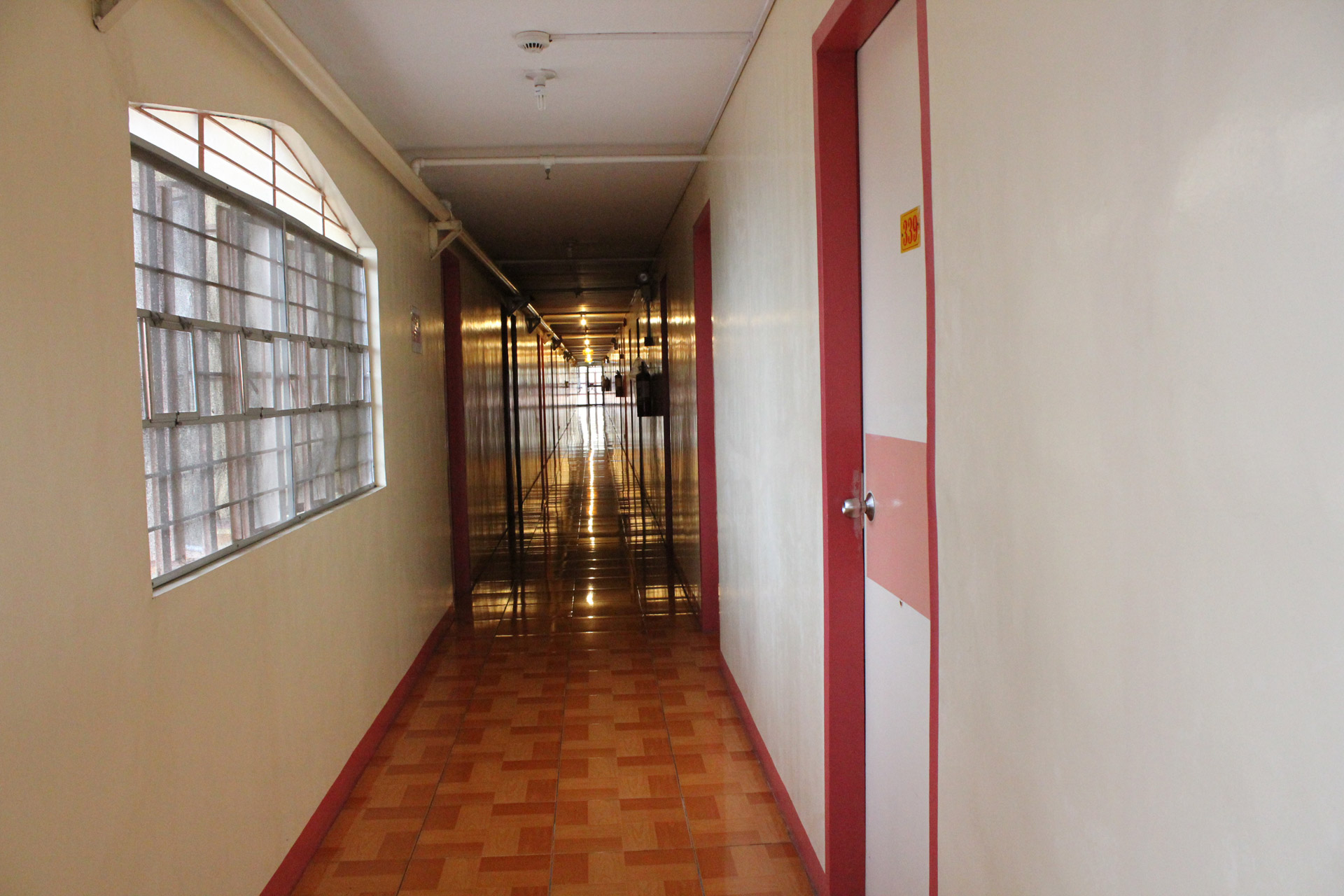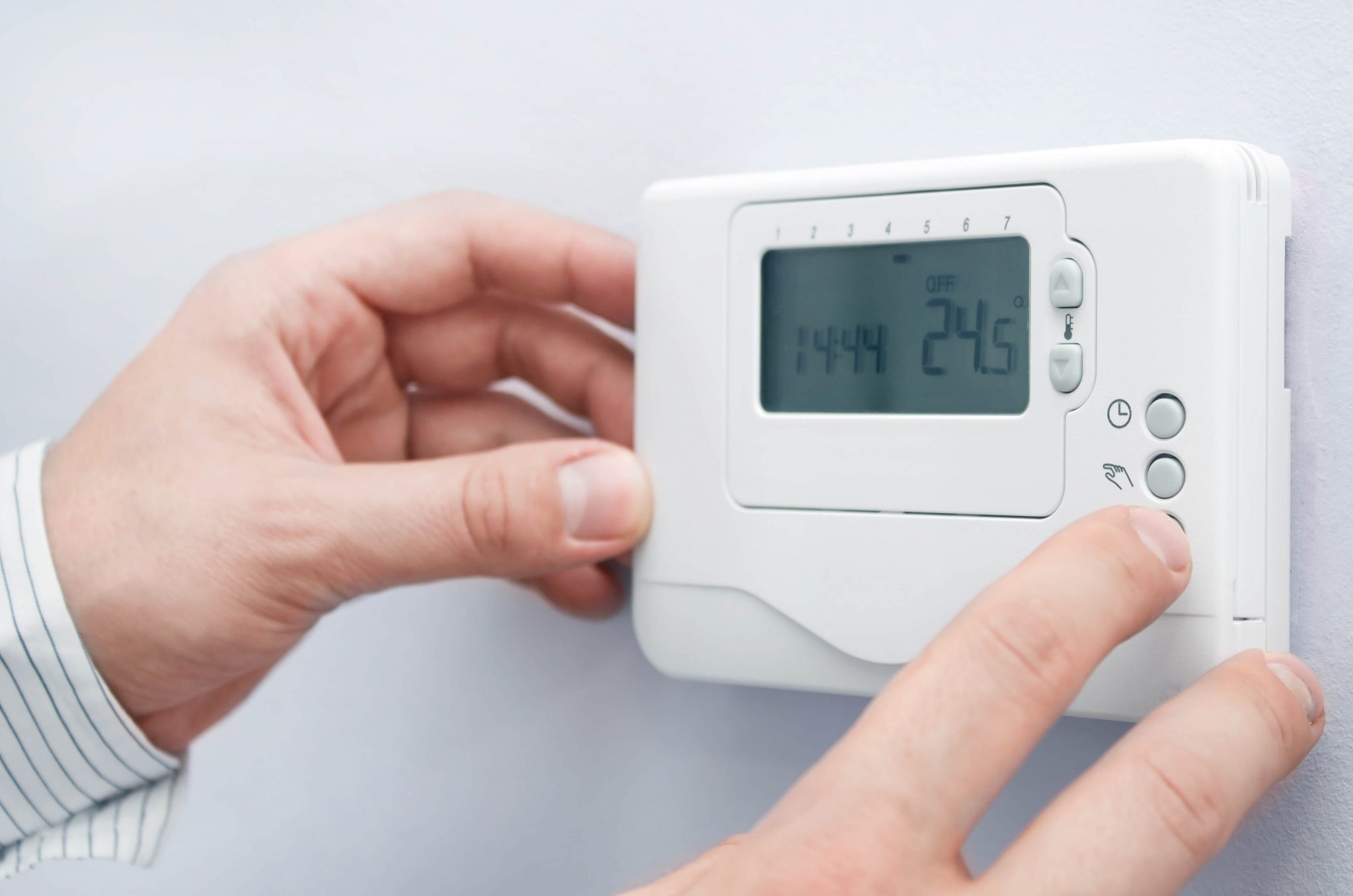Thermostat Placement: Where Should You Put It in Your Home?
The placement of a thermostat in a home can greatly impact its performance and energy efficiency. While some people may prefer to have their thermostat in the hallway, others may opt for the living room. But which option is best? Let's explore the top 10 benefits and considerations of having a thermostat in either the hallway or living room.
Thermostat Options: Which One is Right for You?
Before deciding on the placement of your thermostat, it's important to consider the various options available. There are two main types of thermostats: manual and programmable. Manual thermostats require you to physically adjust the temperature settings, while programmable thermostats allow you to set a schedule for your heating and cooling needs. Both options have their pros and cons, so choose the one that best fits your lifestyle and budget.
Thermostat Location: The Pros and Cons of the Hallway
The hallway is a popular location for thermostats, and for good reason. It is often a central location in the home, making it easily accessible for temperature adjustments. It is also a good spot for capturing the average temperature of the entire home. However, if your hallway is near a drafty door or window, it may not accurately reflect the temperature of the rest of the house.
Thermostat Location: The Pros and Cons of the Living Room
The living room is another popular location for thermostats. It is often the most frequently used room in the home, making it a convenient spot for temperature adjustments. Additionally, if you spend most of your time in the living room, it's important to have a thermostat in this area to ensure your comfort. However, if you have a large open concept living space, the temperature in the room may not accurately reflect the temperature in other areas of the house.
Thermostat Control: Finding the Perfect Temperature
One of the main benefits of having a thermostat in either the hallway or living room is the ability to control the temperature to your liking. With a manual thermostat, you can easily adjust the temperature up or down depending on your comfort level. And with a programmable thermostat, you can set a schedule to automatically adjust the temperature at different times of the day.
Thermostat Settings: How to Optimize Your Energy Usage
The placement of your thermostat can also affect your energy usage and ultimately, your utility bills. For example, if you place your thermostat in a room that is frequently used, such as the living room, it may lead to higher energy consumption. On the other hand, placing it in a less frequently used area, such as the hallway, may result in lower energy usage.
Thermostat Placement in Your Home: Aesthetics Matter
Aside from functionality and energy efficiency, the placement of your thermostat can also have an impact on the aesthetics of your home. A thermostat in the hallway may be more discreet and blend in with the surrounding decor. However, a thermostat in the living room can be a statement piece and add to the overall design of the room.
Thermostat Placement in Your House: What About Upstairs?
If you have a multi-story home, you may be wondering where to place the thermostat for the upper levels. The same principles apply here - either the hallway or the living room can be suitable options. However, it's important to consider the location of the thermostat in relation to the rooms it will be regulating. For example, if you have a bedroom on the upper level, placing the thermostat in the hallway may not accurately reflect the temperature in that room.
Thermostat Placement Options: Don't Be Afraid to Experiment
Ultimately, the best placement for your thermostat will depend on your individual home and lifestyle. It may take some trial and error to find the perfect location. Don't be afraid to experiment with different options and see what works best for you. And remember, the placement of your thermostat can always be changed if needed.
Thermostat Placement in Hallway or Living Room: The Final Verdict
So, which is the better option - hallway or living room? The truth is, there is no definitive answer. Both locations have their pros and cons, and the best placement will vary from home to home. Consider your specific needs, do some research, and don't be afraid to consult a professional for advice. With the right placement, your thermostat can effectively regulate the temperature in your home and save you money on energy costs.
The Benefits of Having a Thermostat in the Hallway or Living Room

Why Location Matters
 When it comes to designing a house, the placement of the thermostat is often overlooked. However, it plays a crucial role in maintaining a comfortable and energy-efficient home. The two most common locations for a thermostat are in the hallway and living room. So, which one is better? Let's delve into the benefits of having a thermostat in these two areas.
When it comes to designing a house, the placement of the thermostat is often overlooked. However, it plays a crucial role in maintaining a comfortable and energy-efficient home. The two most common locations for a thermostat are in the hallway and living room. So, which one is better? Let's delve into the benefits of having a thermostat in these two areas.
Convenience and Accessibility
 Having a thermostat in the hallway or living room makes it easily accessible for everyone in the house. It eliminates the need to go to a specific room to adjust the temperature. With a thermostat in the hallway, you can easily make changes as you pass by, without having to interrupt your daily routine. Similarly, having a thermostat in the living room, the most commonly used space in a house, allows for quick and convenient temperature adjustments.
Having a thermostat in the hallway or living room makes it easily accessible for everyone in the house. It eliminates the need to go to a specific room to adjust the temperature. With a thermostat in the hallway, you can easily make changes as you pass by, without having to interrupt your daily routine. Similarly, having a thermostat in the living room, the most commonly used space in a house, allows for quick and convenient temperature adjustments.
Proper Temperature Control
 The placement of a thermostat is crucial for proper temperature control. The hallway and living room are considered ideal locations because they are central areas in the house. This means that the thermostat can accurately measure the temperature and adjust accordingly. Placing the thermostat in a room that is rarely used or has a lot of heat sources, such as the kitchen, can result in inaccurate temperature readings and inefficient cooling or heating.
The placement of a thermostat is crucial for proper temperature control. The hallway and living room are considered ideal locations because they are central areas in the house. This means that the thermostat can accurately measure the temperature and adjust accordingly. Placing the thermostat in a room that is rarely used or has a lot of heat sources, such as the kitchen, can result in inaccurate temperature readings and inefficient cooling or heating.
Energy Efficiency
 Having a thermostat in the hallway or living room can also lead to energy savings. With easy access to the thermostat, you can easily turn it off or adjust the temperature when leaving the house or when it's not needed. This can help reduce energy consumption and lower your utility bills. Additionally, a properly placed thermostat can help maintain a consistent temperature throughout the house, preventing hot and cold spots and avoiding unnecessary energy usage.
Having a thermostat in the hallway or living room can also lead to energy savings. With easy access to the thermostat, you can easily turn it off or adjust the temperature when leaving the house or when it's not needed. This can help reduce energy consumption and lower your utility bills. Additionally, a properly placed thermostat can help maintain a consistent temperature throughout the house, preventing hot and cold spots and avoiding unnecessary energy usage.
The Aesthetics
 Apart from the functional benefits, the placement of the thermostat can also enhance the aesthetics of your house. With a sleek and modern thermostat in the hallway or living room, it can serve as a stylish addition to your home decor. This is especially true if you opt for a smart thermostat that can be controlled remotely through a phone app.
Apart from the functional benefits, the placement of the thermostat can also enhance the aesthetics of your house. With a sleek and modern thermostat in the hallway or living room, it can serve as a stylish addition to your home decor. This is especially true if you opt for a smart thermostat that can be controlled remotely through a phone app.
Final Thoughts
 In conclusion, having a thermostat in the hallway or living room offers convenience, proper temperature control, energy efficiency, and aesthetic appeal. It may seem like a small detail in house design, but choosing the right location for your thermostat can make a big difference in your daily life and household expenses. So, when designing your house, make sure to give careful consideration to the placement of your thermostat.
In conclusion, having a thermostat in the hallway or living room offers convenience, proper temperature control, energy efficiency, and aesthetic appeal. It may seem like a small detail in house design, but choosing the right location for your thermostat can make a big difference in your daily life and household expenses. So, when designing your house, make sure to give careful consideration to the placement of your thermostat.












































































